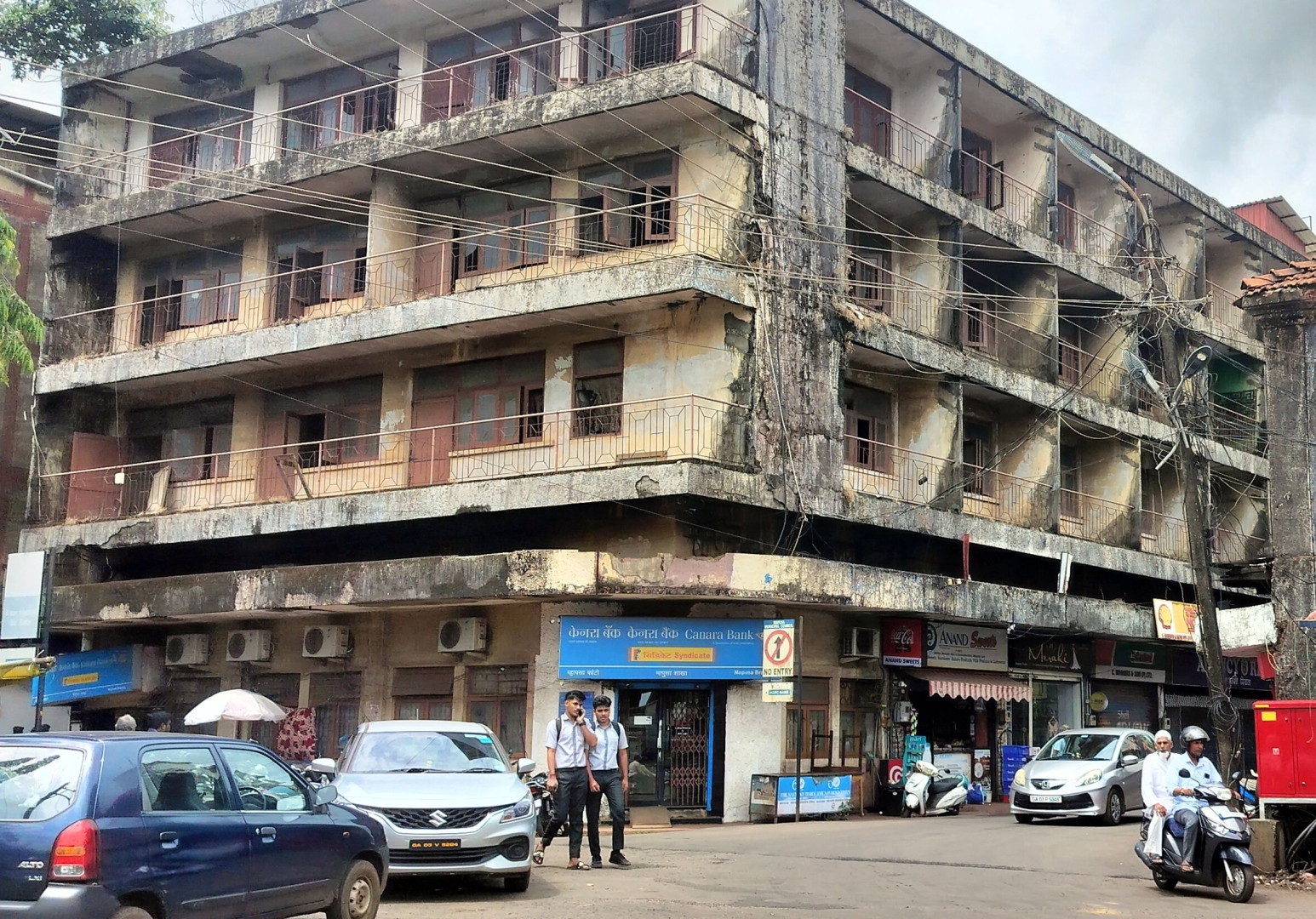
MAPUSA
A series of alarming structural failures in the heart of Mapusa has once again spotlighted the growing menace of unsafe buildings in the bustling North Goa town.
In the span of a few days, two separate incidents – a leaking government complex and the collapse of a concrete balcony near the vegetable market – have raised serious concerns about the state of public and private infrastructure, calling for urgent attention and systemic reform.
The first incident involved the government complex that houses several key administrative departments. Water leakage from the roof and visible cracks on the walls have exposed the deteriorating condition of this vital public facility, frequented daily by hundreds of citizens. While no injuries were reported, the episode has drawn attention to the vulnerability of even state-owned structures.
Soon after, panic gripped the area near the Mapusa vegetable market when large chunks of concrete from a building’s balcony came crashing down. Though no one was hurt, the incident served as a grim reminder of the structural vulnerabilities in one of the town’s busiest commercial areas.
Notably, neither of these buildings was on the official list of unsafe structures – an oversight that underscores larger deficiencies in inspection, maintenance, and accountability.
Pattern of neglect
These are far from isolated cases. In recent years, Mapusa has seen multiple near-tragic collapses: in 2024, a section of the dilapidated Koskar-Kesarkar building’s slab gave way, narrowly avoiding casualties.
Similarly, in 2019, a century-old building along Feira Alta State Highway collapsed during the monsoon, miraculously causing no injuries as it occurred late at night.
These events reveal a persistent pattern of structural neglect, poor maintenance, and inadequate preventive action – even when authorities are well aware of the risks.
According to Chandrakant Shetkar, Chief Officer of the Mapusa Municipal Council (MMC), nine buildings have been officially identified as unsafe. These include the Dempo Mansion, opposite the municipal garden; Coscar Corner; Hotel Safari, near the old municipal building; Ganga Apartments, opposite the Valankani Chapel; and Junta Quarters, behind Alankar Theatre.
Surprisingly, even some government buildings, such as the one housing the electricity department, have been declared unsafe yet remain operational — endangering both staff and the public.
Along major roads, several ancestral homes also show signs of deterioration.
Barriers to action
One of the key impediments to resolving this issue is the legal and logistical deadlock between landlords and tenants. Landlords often express willingness to demolish or repair unsafe buildings, but tenants, fearing displacement and loss of income, frequently resist vacating the premises. This deadlock leads to prolonged litigation and delays that leave buildings in limbo – and in danger.
A senior MMC engineer explained, “In most cases, the owners don’t act because they are unable to deal with the tenants. Convincing a tenant is a big hassle, so the owner prefers to maintain the status quo, leaving the building to deteriorate further.”
The municipal council typically issues notices to building owners urging repairs or demolition, but compliance is rare. As a temporary measure, MMC has resorted to sealing off hazardous buildings, though this only addresses the symptoms, not the root causes.
Former Mapusa Municipal Chairperson Sandip Falari has proposed a more strategic, phased approach to tackle the crisis. He recommends focusing first on buildings without tenants or with cooperative single owners.
This, he argues, would reduce the backlog and help the council gradually chip away at the larger problem. “The civic body must try to reduce the backlog by selecting less cumbersome cases,” Falari said.
His approach emphasises achievable short-term goals while building momentum for broader structural reform.
The way forward
The spate of recent incidents underscores the urgent need for a comprehensive policy response. Preventive maintenance, clear protocols for tenant-landlord disputes, quicker legal processes, and consistent monitoring of building safety must be prioritised.
Ultimately, safeguarding public safety will require coordination between the municipal council, building owners, tenants, and state authorities. Failure to act decisively could turn near-misses into tragedies, further eroding public trust and risking lives in a town already living on borrowed structural time.